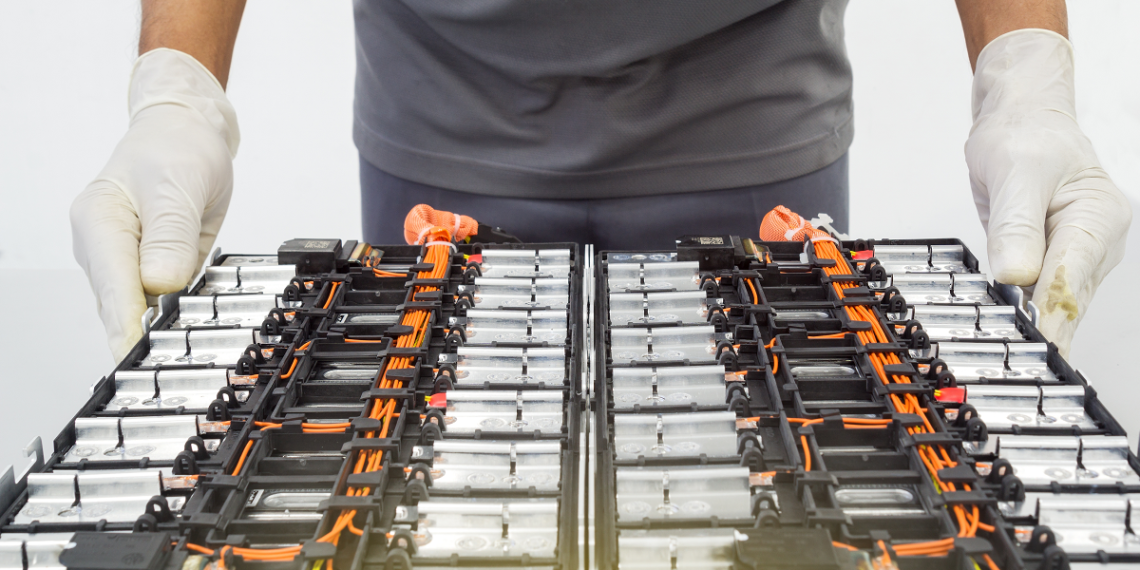The automobile industry is amid a revolutionary shift from combustion engines to electric vehicles (EVs), with policy makers vowing to provide cleaner and safer vehicles, a move highlighted by an agreement between European countries on a 2035 deadline to end all sales of combustion transportation.
EV sales increased by 55% in 2022 from the previous year, and the subsequent growth in battery demand has increased demand for critical materials.
The EV battery market is dominated by various types of the lithium-ion battery that differ by their ratio of critical minerals within the cathode: lithium-iron-phosphate (LFP), nickel-manganese-cobalt (NMC), and nickel-cobalt-aluminium compositions (NCA).
In 2022, NMC remained the leading battery chemistry with a market share of 60%, followed by LFP, with a share of approximately 30%, and NCA with a share of 8%.
Battery manufacturers are continuing to work with these chemistries in the short term to reduce reliance on critical minerals that are in short supply or overused in certain jurisdictions, whilst looking for new chemistries to revamp the battery space. Battery chemistries containing sodium and iron are among the potential new options for automakers.
These innovations will force car manufacturers to deliberate the pros and cons of different battery chemistries by comparing performance to cost. Further research of these chemistries is necessary before battery makers will be able to make informed decisions.
Cobalt
Automakers are trying to reduce the use of cobalt in batteries. Cobalt largely comes from regions lacking in environmental safeguards, and where human rights violations are becoming more frequently highlighted by ESG conscious investors.
Battery makers will continue using NMC batteries, but with higher proportions of nickel and manganese. The removal of cobalt from batteries is attractive due to its environmental concerns, but cobalt cannot be completely eradicated from NMC batteries, due to its stabilizing qualities. Furthermore, there are several technological hurdles to overcome before we cand drastically reduce the cobalt used in NMC batteries.
Nickel-rich chemistries maintain the energy density in a battery but reduce the safety as it becomes more reactive. Nickel-rich versions of the NMC battery are already being adopted by battery manufacturers and automakers are expected to comprise 25% of all batteries sold in 2024, according to market forecasts by E Source, a utilities research firm.
Nickel
Another alternative is to reduce the nickel content. Nickel importers, particularly in the US and Europe, have been facing issues surrounding supply restrictions.
Some governments in the west have implemented tariffs on nickels in response to the Ukraine war in early 2022, since Russia is a major nickel producer.
The US has also implemented tariffs on Russian nickel imports, and the UK is expected to ban nickel imports altogether.
The London Metal Exchange, a key nickel trading institution, also struggled to manage nickel trades shortly after the invasion, seeing nickel prices soar to US$100,000/mt in March 2022.
The next battery technology to infiltrate the market within the short -medium term is likely to have a higher manganese content, despite doubts surrounding the energy density of manganese rich chemistries compared to a high nickel content product.
Although companies such as Ford Motor Co. have made use of nickel batteries in their new F-150, long range vehicle, batteries with a high manganese content can guarantee supply resiliency and safety which nickel heavy chemistries cannot.
Iron
Experts predict that the LFP battery will take up a large proportion of the market share in the US and Europe, even though it has a shorter range and low energy density.
The main component of LFP batteries is lithium, is typically a pricy commodity. However, this battery chemistry remains overall cheaper than others.
The battery pack is between 30 and 40% of the total cost of an EV, and therefore an attractive option for automakers.
The increased availability and lower price of these materials justify the performance. Yet, without the growth of battery supply chains outside China, the US risks increasing its reliance on Chinese manufacturing and supply. According to a report from the International Energy Agency, approximately 95% of the LFP batteries produced in 2022 went into vehicles made in China.
Several automakers are now reserving NMC cathode technology for their premium, long range line of EVs, and LFP batteries will be set aside for economy cars.
In the US, consumer attitudes have shifted, and more buyers are willing to purchase vehicles for everyday use instead of prioritizing long range.
Sodium
Contemporary Amperex Technology Co. Ltd, China’s largest battery producer, announced it would begin mass-producing sodium-ion batteries in 2023, as well as China based BYD Company Ltd.
The technology replaces lithium with sodium, which is more abundant and cheaper. Additionally, sodium-ion batteries do not require cobalt or nickel, they perform better in lower temperatures, and they recharge faster than lithium-ion batteries.
Conversely, sodium-ion batteries do not have the same energy density as their lithium-ion counterpart. This could make sodium-ion appropriate for urban vehicles with lower range or for stationary storage but could be more challenging to deploy in locations where buyers prioritize maximum range vehicles, or where charging is inaccessible.












